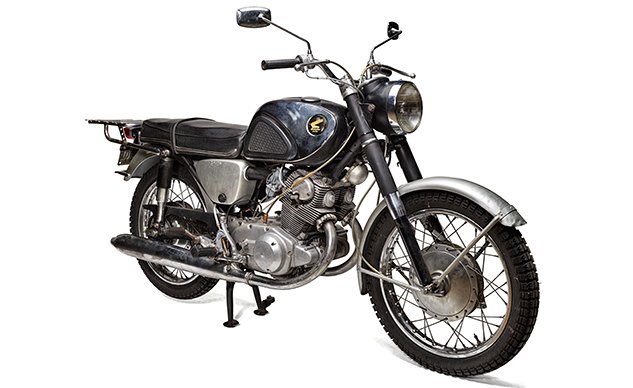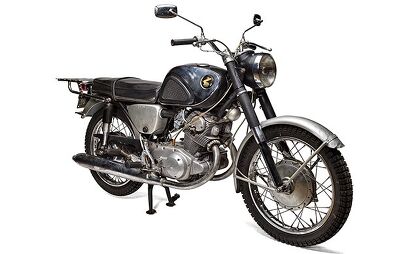Robert Pirsig's "Zen" CB77 SuperHawk Rides Into the Smithsonian
The author of the acclaimed Zen and the Art of Motorcycle Maintenance died at age 88 in 2017, and now the Honda CB77 Super Hawk that served as the catalyst for the book is headed to the Smithsonian. After being stored for decades in the family’s New England garage, the bike’s been recently restored and is a gift from Pirsig’s widow, along with his leather jacket, maps, shop manual, toolboxes, and other gear from the 1968 ride.
This story at NPR.org tells the tale of Pirsig’s epic:
Zen was published in 1974, after being rejected by 121 publishing houses. “The book is brilliant beyond belief,” wrote Morrow editor James Landis before publication. “It is probably a work of genius and will, I’ll wager, attain classic status.”
Indeed, the book quickly became a best-seller, and has proved enduring as a work of popular philosophy. A 1968 motorcycle trip across the West with his son Christopher was his inspiration.
Christopher Lehmann-Haupt reviewed Zen for The New York Times in 1974. “[H]owever impressive are the seductive powers with which Mr. Pirsig engages us in his motorcycle trip, they are nothing compared to the skill with which he interests us in his philosophic trip,” he wrote. “Mr. Pirsig may sometimes appear to be a greener‐America proselytizer, with his beard and his motorcycle tripping and his talk about learning to love technology. But when he comes to grips with the hard philosophical conundrums raised by the 1960’s, he can be electrifying.”
Pirsig was born in Minneapolis, the son of a University of Minnesota law professor. He graduated from high school at 15 and enlisted in the Army after World War II. While stationed in South Korea, he encountered the Asian philosophies that would underpin his work. He went on to study Hindu philosophy in India and for a time was enrolled in a philosophy Ph.D. program at the University of Chicago. He was hospitalized for mental illness and returned to Minneapolis, where he worked as a technical writer and began writing his first book.
The Honda CB77 in question, all 305 cc of it, gave the Japanese maker its toehold in the rest of the world beginning in 1961, and was Honda’s biggest, most powerful and sophisticated bike (overhead cam! electric start!). Capable of 9000 rpm and 100 mph with only about half the displacement of the British competition, the Honda was also dead-reliable and oil-tight. Pirsig’s book is an extended (some would say too extended) meditation on quality, and without the Honda along for the ride, maybe it wouldn’t have been written?
Then again, Wkipedia reminds us, “The novel never mentions the make or model of Pirsig’s motorcycle, but does discuss their companions’, John and Sylvia Sutherland’s, new BMW, an R60/2.”
Whether you’re a fan or not, over 5 million copies of Zen have been sold to date, in 27 languages, and so the lowly CB takes its rightful place on Washington’s National Mall, alongside Charles Lindbergh’s airplane, Chuck Berry’s Cadillac – and all the other historical bikes in the Smithsonian Motorcycle Collection.
More by John Burns

































Comments
Join the conversation
Great book. Had a large influence on my idea of quality as a mechanical engineer and thence as a consumer.
I think 30 years is a big stretch, Ramon. The CB72/CB77 came out in 1961, and as the CB350 came out in 1968, I think it's fair to say it advanced styling by about, yeah, 7 years, give or take a few months. There weren't really any bikes that looked like a CB350 in 1998 after all.